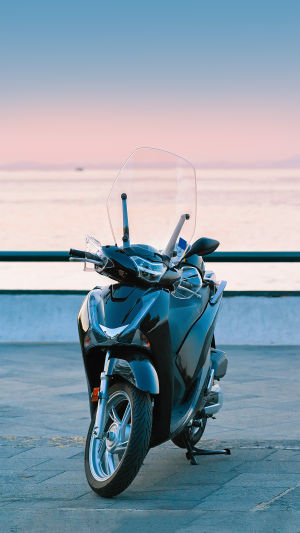In 1885, Gottlieb Daimler installed an engine into a frame to create the world's first motorcycle. Motorcycle racing, on the other hand, is a competitive sport that uses motorcycles as the apparatus.
There are two types of motorcycles: two-wheeled and three-wheeled, and each type is divided into several classes based on the working volume of the engine cylinder. These classes include cross-country, multi-day, road, track, and touring races, and the rankings are based on driving speed or skill.
Before purchasing a motorcycle, an experienced rider will typically consider their needs and preferences.
They will analyze and filter the available options based on the vehicle's characteristics and performance to make an informed decision. The same goes for motorcycle equipment.
When buying a motorcycle, it is essential to consider one's own needs rather than relying solely on advice from others.
The advice one receives is based on the responder's knowledge of the product and bias, such as brand orientation. It is crucial to establish a basic level of understanding of the environment and goals before asking questions.
The first step in purchasing a motorcycle is to define one's needs.
This includes determining the purpose of the motorcycle, such as whether it will be used for commuting or leisure.
One should also consider their budget and use scenarios, such as running mountains, riding on tracks, or long-distance touring.
Additionally, one should determine their focus, whether it be comfort, sportiness, configuration, economy, or quality performance. Finally, one should consider their driving experience and overall cycling style.
It is also essential to understand product classification. Motorcycle products can be classified by two main characteristics: brand nature and type of vehicle.
Brand nature can be divided into domestic brands, joint venture brands, and imported brands.
Domestic brands offer price advantages and low maintenance costs, mainly for medium and small-displacement vehicles, with average overall performance.
Joint venture brands offer mature technology, reliable quality, and high retention rates compared to domestic brands. Imported brands offer medium and large displacement products with better power performance and driving quality but come with high post-maintenance costs.
Motorcycle types are classified based on their general characteristics, including pedals, streetcars, retro cars, imitation races, rally cars, touring cars, large touring cars, and American cruisers.
One should choose the right type of product based on their main use environment and purpose.
Finally, it is critical to ask appropriate and targeted inquiries to get useful information quickly.
Questions should be organized into three categories:
Confirming one's needs and seeking information on the brand and model.
Initially defining the scope of vehicle buying to understand the performance of the vehicle,
After a short test drive, decide the best course of action and learn about the vehicle's typical faults, after-sales, and post-maintenance.
Avoid asking about the vehicle's selling price, characteristics, and appearance preferences, as well as queries with ambiguous or contradicting objectives.
Purchasing a motorcycle requires careful consideration of one's needs and preferences.
It is important to establish a basic level of understanding of the environment and goals before seeking advice and asking relevant questions.
By considering brand nature and vehicle type, one can choose the right motorcycle that best suits their purpose and use scenario.





